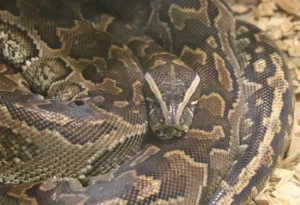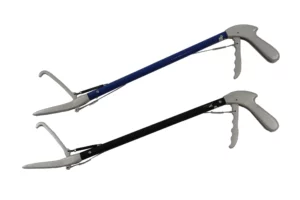
Invasive snake populations pose a significant threat to ecosystems and human communities alike. It is crucial to employ effective strategies to manage and control these invasive species. This article will provide an in-depth look at various approaches to effectively manage invasive snake populations. From natural deterrents to snake repellents and humane trapping techniques, we will explore the different methods available to mitigate the risks associated with invasive snakes.
When facing an invasive snake problem, it is important to adopt a proactive approach to prevent their establishment and spread. Effective management involves a combination of prevention, control, and eradication measures tailored to the specific snake species in question.
Snakes are a fascinating group of reptiles that play important roles in ecosystems around the world. However, when introduced to new environments where they are not native, they can have detrimental effects on native wildlife and ecosystems. Invasive snake populations can disrupt the balance of local ecosystems, prey on native species, and even pose risks to human health and safety.

One way to deter snakes from invading your property is by utilizing natural methods. Keeping your surroundings less appealing to snakes can help reduce their presence. This can be achieved by maintaining a well-groomed lawn, removing brush piles, and sealing any potential points of entry, such as gaps in walls or foundations.
Snakes are ectothermic, meaning they rely on external sources of heat to regulate their body temperature. By removing potential hiding spots, such as piles of debris or overgrown vegetation, you can make your property less attractive to snakes seeking shelter. Additionally, sealing any gaps or cracks in your home's exterior can prevent snakes from entering and establishing themselves inside.
In addition, introducing natural predators of snakes, such as certain bird species or outdoor cats, can help keep their numbers in check. Birds of prey, like hawks and owls, are known to prey on snakes and can help control their populations naturally. However, it is important to note that introducing predator species should be done carefully and in consultation with local wildlife authorities to avoid unintended consequences.

If natural deterrents alone do not suffice, snake repellents can provide an additional layer of defense. Numerous commercial snake repellents are available, which typically contain substances that emit strong odors snakes find unpleasant.
These repellents can be applied around the perimeter of your property or in areas prone to snake activity. The strong odors emitted by these repellents can deter snakes from approaching the treated areas, reducing the likelihood of encounters. It is important to carefully follow the instructions provided by the manufacturer when using snake repellents to ensure their effectiveness and minimize any potential risks to humans, pets, or the environment.
In situations where prevention and repellents are not enough, trapping snakes can be an effective method of control. There are various types of snake traps available, each designed to capture snakes safely and humanely.
Glue boards are one type of snake trap that uses a sticky surface to immobilize the snake upon contact. Snake tongs are another tool used for capturing snakes, allowing for safe handling and relocation. Additionally, there are snake traps with a one-way door system, which allows snakes to enter but not exit, ensuring their capture without causing harm.
When using traps, it is important to ensure they are placed in areas with high snake activity and regularly checked to avoid prolonged suffering. Once trapped, it is recommended to contact local wildlife authorities or experts to safely remove and relocate the captured snakes. These professionals have the necessary knowledge and experience to handle snakes safely and ensure their proper relocation to suitable habitats.
Managing invasive snake populations requires a combination of strategies tailored to the specific circumstances and species involved. By adopting a proactive approach and utilizing a range of prevention, control, and eradication measures, it is possible to effectively manage and mitigate the impacts of invasive snakes on ecosystems and human communities.

Dealing with invasive snake populations can be complex and challenging. In some cases, it may be necessary to seek assistance from snake control experts. These professionals have the knowledge, experience, and specialized equipment to effectively manage snake infestations. They can conduct thorough inspections, identify snake species, and implement appropriate control measures tailored to the specific situation. Seeking expert help ensures a safe and efficient resolution to the invasive snake problem.
When faced with an invasive snake population, it is important to understand the potential risks and dangers associated with these reptiles. Some snake species are venomous and can pose a threat to human health and safety. Venomous snakes, such as rattlesnakes, copperheads, and coral snakes, have venomous bites that can cause severe pain, tissue damage, and even death if not treated promptly. Non-venomous snakes, although not directly harmful to humans, can still cause fear and anxiety among individuals who encounter them. Therefore, it is crucial to address snake infestations promptly and effectively.
Snake control experts are trained in the identification and handling of different snake species. They can accurately determine whether the snakes in question are venomous or non-venomous, which is essential for implementing appropriate control measures. Venomous snake species require specialized handling techniques to ensure the safety of both the experts and the surrounding environment. Snake control professionals have the necessary tools and knowledge to safely capture and remove venomous snakes, minimizing the risk of accidental bites and potential harm.
Furthermore, snake control experts are well-versed in the behavior and habits of snakes. They understand the factors that attract snakes to certain areas and can provide valuable insights on how to prevent future infestations. By addressing the root causes of snake presence, such as food sources, shelter, and breeding grounds, experts can help create an environment that is less conducive to snake habitation. This proactive approach can significantly reduce the likelihood of recurring snake problems.
Another advantage of seeking expert help for snake control is the use of specialized equipment. Snake control professionals have access to a range of tools and devices designed specifically for snake management. These may include snake traps, snake repellents, and snake exclusion barriers. Snake traps are designed to safely capture snakes without causing harm, allowing for their subsequent removal from the premises. Snake repellents, on the other hand, can be used to deter snakes from specific areas, making them less likely to return. Snake exclusion barriers are physical barriers that prevent snakes from entering or exiting certain spaces, effectively blocking their access.
In conclusion, managing invasive snake populations requires a multifaceted approach. Employing natural deterrents, utilizing snake repellents, and implementing safe and humane trapping techniques can all contribute to controlling snake populations. In more severe cases, it is advisable to seek the assistance of snake control experts. By implementing these effective strategies, we can mitigate the negative impacts of invasive snakes on ecosystems and communities.